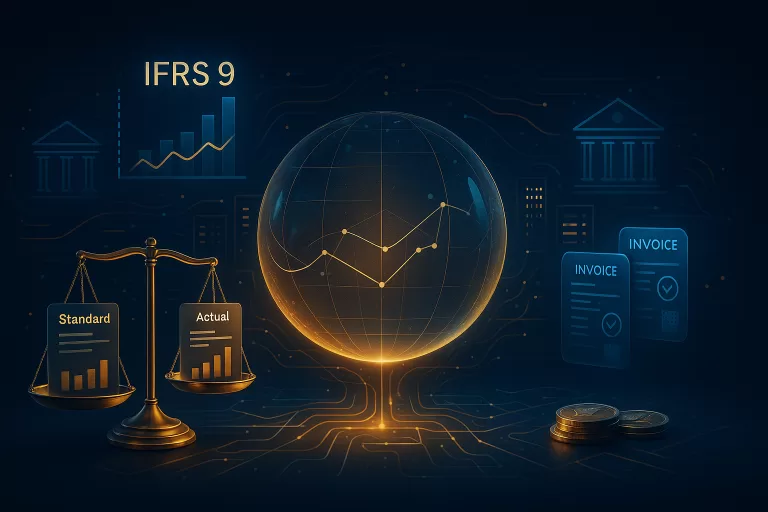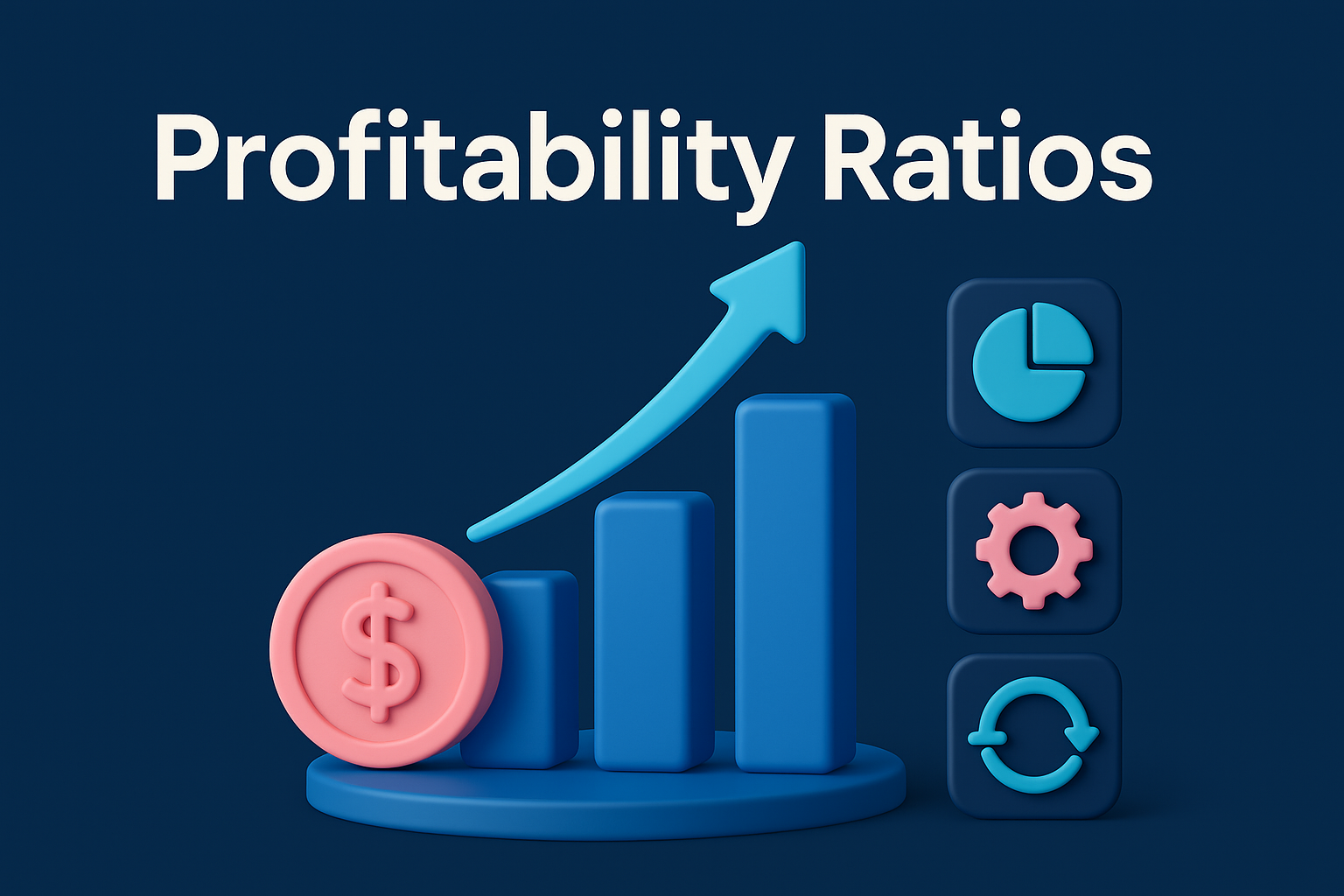Introduction
IFRS 9 – Financial Instruments is the international financial reporting standard that replaced IAS 39. More than a technical adjustment, IFRS 9 represents a paradigm shift in accounting philosophy: moving from the incurred loss model to the expected credit loss (ECL) model.
This shift is not merely about compliance—it transforms financial reporting into a tool for risk management, transparency, and proactive decision-making, ensuring that financial statements reflect not only past events but also forward-looking risks.
What is IFRS 9 and Why Does It Matter?
IFRS 9 is built on three fundamental pillars:
Classification and Measurement of financial instruments, based on business models and the nature of cash flows.
Hedge Accounting, aligning financial reporting with actual risk management strategies.
Expected Credit Losses (ECL), which form the core of impairment provisioning.
These pillars connect accounting with financial planning and risk management, creating a more holistic framework.
Provisioning under IFRS 9
Before IFRS 9, impairment followed the Incurred Loss Model: provisions were recognized only when there was objective evidence of loss.
With IFRS 9, the model shifts to Expected Credit Losses (ECL): provisions are recognized earlier, based on forward-looking assessments of credit risk rather than waiting for actual defaults to occur.
The Three-Stage Model
Financial assets (such as loans and receivables) are classified into three stages under IFRS 9:
Stage 1: Performing assets, with no significant increase in credit risk. Provisions equal to 12-month expected credit losses (12-month ECL).
Stage 2: Assets with a significant increase in credit risk, but not yet defaulted. Provisions equal to lifetime expected credit losses (Lifetime ECL).
Stage 3: Credit-impaired assets. Provisions equal to lifetime ECL, with interest revenue calculated on the net carrying amount.
Formula for ECL Calculation
The Expected Credit Loss is generally calculated as:
ECL=∑(EAD×PD×LGD)ECL = \sum (EAD \times PD \times LGD)ECL=∑(EAD×PD×LGD)
Where:
EAD (Exposure at Default): The outstanding balance or exposure.
PD (Probability of Default): The likelihood of default, based on historical data and statistical models.
LGD (Loss Given Default): The percentage of loss after considering recoveries or collateral.
Example: Simplified Calculation
Receivables = 100,000
PD = 5%
LGD = 40%
ECL=100,000×5%×40%=2,000 (Provision)ECL = 100,000 \times 5\% \times 40\% = 2,000 \text{ (Provision)}ECL=100,000×5%×40%=2,000 (Provision)
Practical Examples of IFRS 9 Application
1. Trade Receivables – Service Company
| Aging Category | Balance | PD | LGD | Provision |
|---|---|---|---|---|
| 0–30 days | 120,000 | 1% | 40% | 480 |
| 31–60 days | 50,000 | 5% | 40% | 1,000 |
| 61–90 days | 20,000 | 15% | 40% | 1,200 |
| > 90 days | 10,000 | 60% | 40% | 2,400 |
| Total | 200,000 | — | — | 5,080 |
2. Loan Portfolio – Bank
Mortgage Loan: 1,000,000 – PD = 0.5% – LGD = 30% → Provision = 1,500.
Commercial Loan: 500,000 – PD = 5% – LGD = 50% → Provision = 12,500.
Consumer Loan: 200,000 – PD = 10% – LGD = 70% → Provision = 14,000.
Total Provisions = 28,000
3. Commercial Entity – Provision Matrix
Companies often use a provision matrix based on receivables aging:
Less than 30 days overdue → 2% provision.
31–90 days overdue → 10% provision.
More than 90 days overdue → 50% provision.
More than 180 days overdue → 100% provision.
The matrix integrates forward-looking information, such as inflation, interest rates, and economic growth. The older the debt or higher the risk, the larger the provision.
Challenges in Implementation
Estimating PD and LGD – Difficult without sufficient historical data.
Forward-Looking Factors – Macroeconomic assumptions add complexity.
High Costs – Developing and maintaining models is resource-intensive.
Resistance from Management – Higher provisions reduce short-term profits.
The Role of Technology
Modern financial systems play a crucial role in automating IFRS 9 requirements.
For example, platforms like Mozon Financial Management System (MACC) provide:
Automated provision matrices for receivables.
Real-time financial data updates.
Advanced analytical reports showing the impact of IFRS 9 on receivables and provisions.
Strategic decision support through integration of accounting and financial analysis.
By leveraging such systems, organizations turn IFRS 9 from a compliance challenge into a competitive advantage, enhancing transparency and risk management.
Frequently Asked Questions (FAQ)
1. What is the main difference between IFRS 9 and earlier standards?
Earlier standards used incurred losses, while IFRS 9 focuses on expected credit losses.
2. Do provisioning rates differ across industries?
Yes. Banks have different models compared to commercial and service companies.
3. Does IFRS 9 apply only to receivables?
No. It applies to loans, receivables, and other financial instruments.
4. Can IFRS 9 be applied manually?
It can, but it is time-consuming and error-prone. Automated systems are more efficient.
5. How does IFRS 9 impact profitability?
Provisions may reduce short-term profits, but they strengthen long-term financial stability.
Conclusion
IFRS 9 is not just an accounting standard—it is a financial philosophy.
It emphasizes transparency, foresight, and prudent risk management. Provisions are no longer viewed as a burden but as a strategic tool for managing receivables, loans, and investments.
Organizations that implement IFRS 9 effectively, supported by advanced systems like the Mozon Financial Management System, place themselves in a position of leadership, trust, and long-term financial stability.
References
IFRS.org – IFRS 9 Financial Instruments
Redcliffe Training – IFRS 9 Expected Credit Losses
PwC – Provision Matrix Practical Guide
BIS.org – IFRS 9 Summary
EY – Classification of Financial Instruments under IFRS 9
Wikipedia – IFRS 9 Overview





